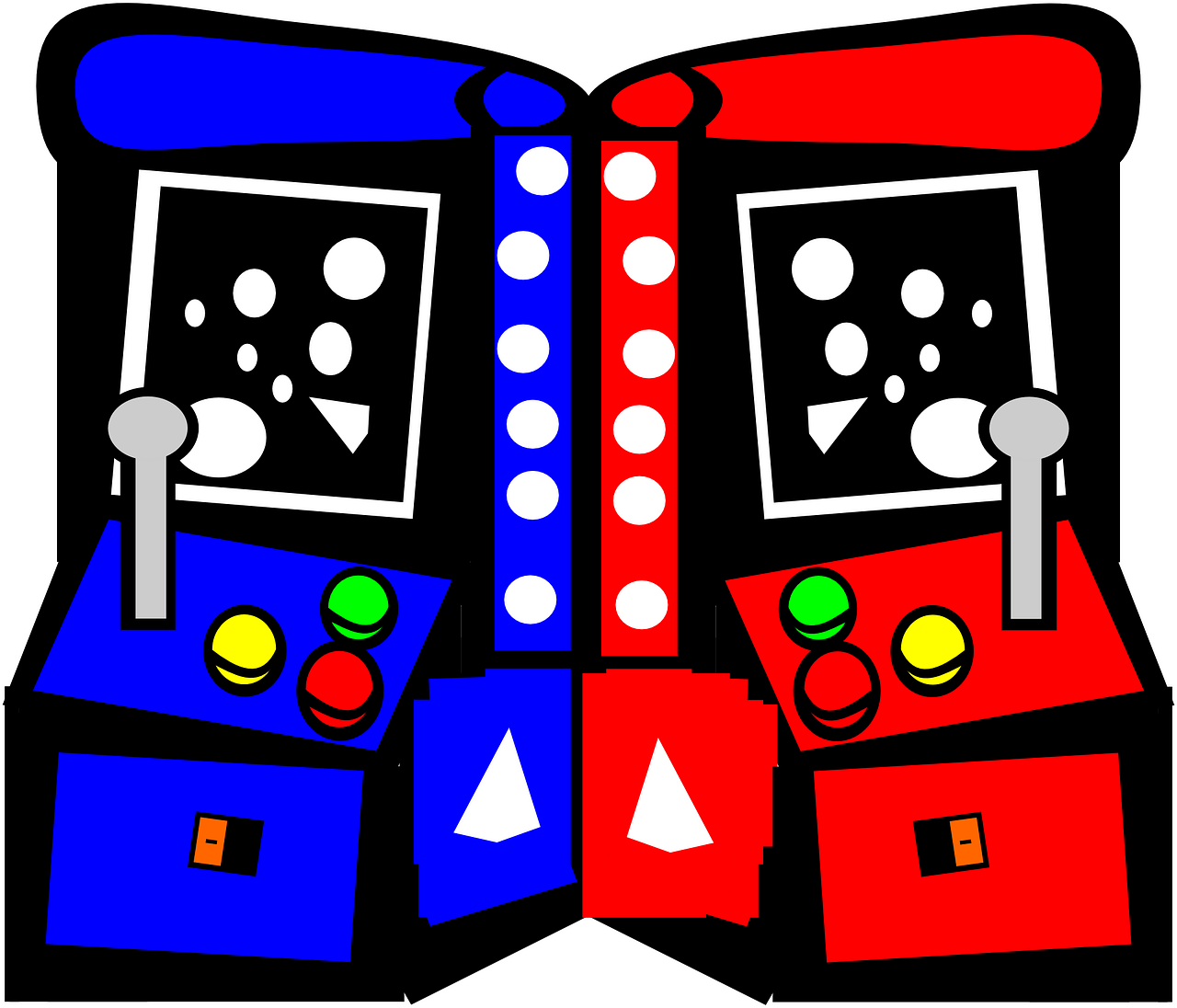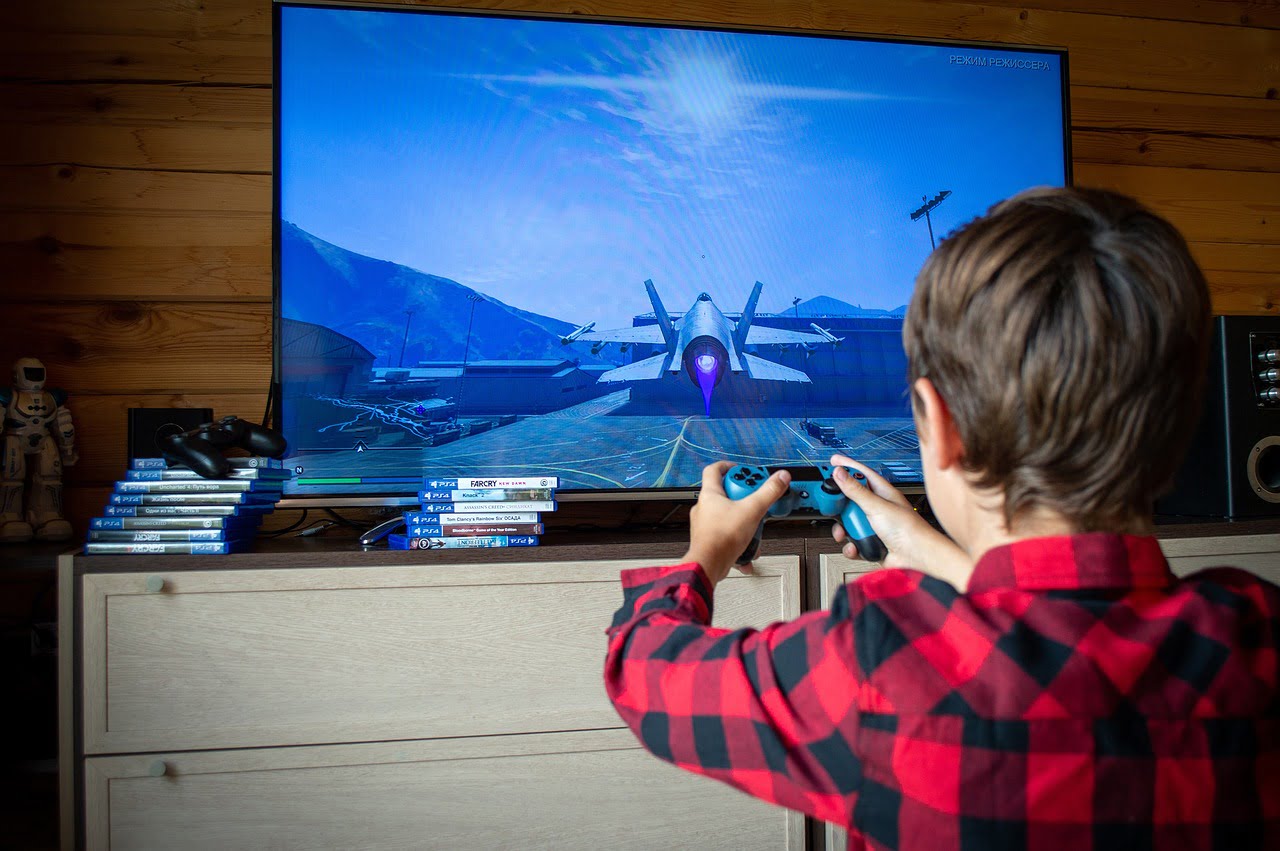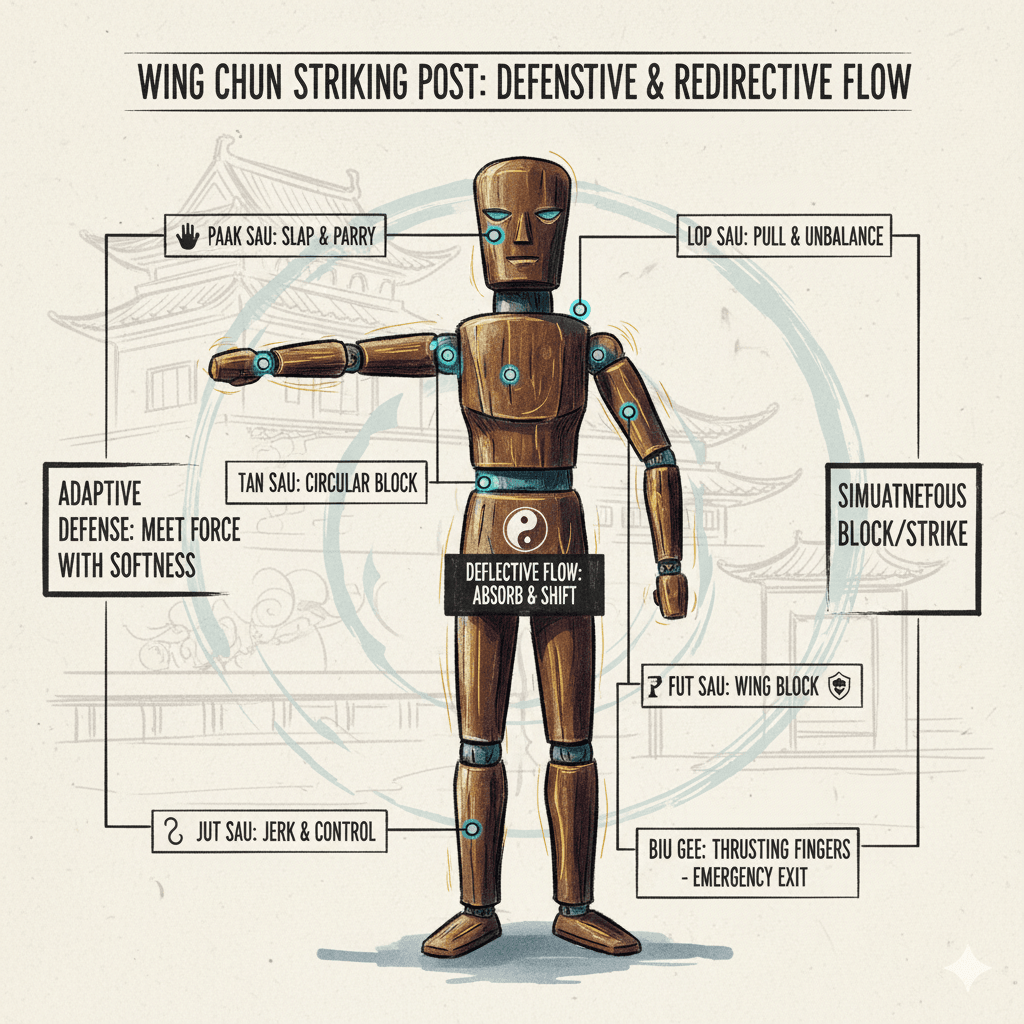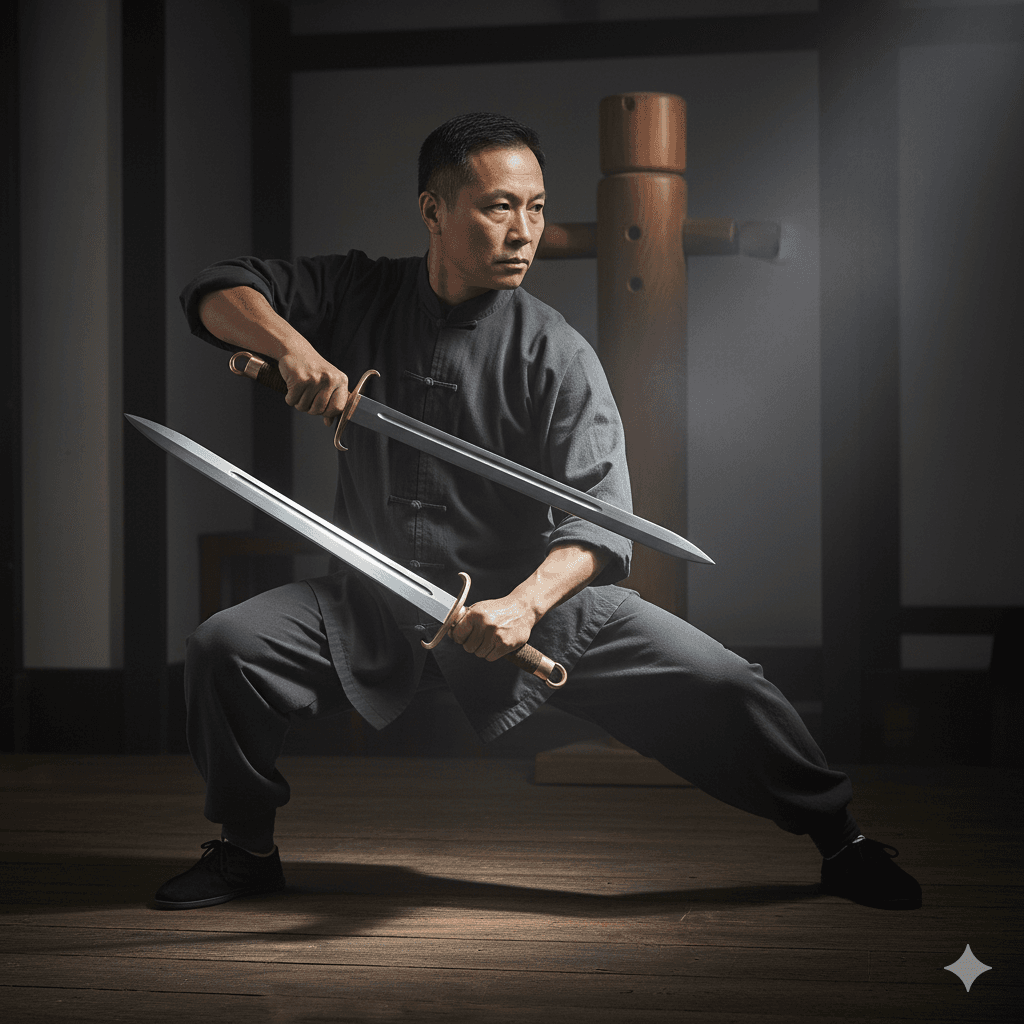Wing Chun, a traditional Chinese martial art, is renowned for its emphasis on close-range combat, efficiency, and economy of movement.
Developed in Southern China, this martial art focuses on quick strikes, strategic positioning, and the use of both defensive and offensive techniques.
The practice of Wing Chun involves forms, drills, and sparring, all designed to improve the practitioner’s agility, reflexes, and tactical intelligence.
As with many traditional martial arts, the path to mastery requires dedication, repetition, and continuous improvement.
In recent years, the integration of technology into martial arts training has opened new avenues for enhancing practice and accelerating learning.
One innovative approach is the incorporation of video gaming into Wing Chun training.
Video games, particularly those with martial arts themes.
can provide an interactive and engaging platform for practitioners to hone their skills.
By simulating combat scenarios and offering real-time feedback, these games can supplement traditional training methods.
making practice sessions more dynamic and enjoyable.
The use of video gaming in Wing Chun practice is not intended to replace conventional training but rather to complement it.
Through carefully designed gaming experiences, practitioners can work on timing, coordination, and decision-making in a virtual environment.
This integration allows for a more comprehensive training regimen that can adapt to the practitioner’s individual needs and progress.
Furthermore, gaming can serve as an additional motivational tool, keeping practitioners engaged and enthusiastic about their training journey.
As we delve deeper into the various ways video gaming can be effectively utilized in Wing Chun practice.
it is essential to consider the potential benefits and challenges of this approach.
By leveraging the advancements in technology, martial artists can enhance their training, gain new insights, and ultimately achieve a higher level of proficiency in Wing Chun.

The Evolution of Martial Arts Training with Technology
Martial arts, with its deep-rooted traditions and philosophies, has undergone significant transformations over the centuries.
Historically, the transmission of martial arts knowledge was a highly personal and physical endeavor.
Students would engage in rigorous, hands-on training sessions under the close supervision of their masters.
learning techniques through direct physical practice and repetition.
These traditional methods emphasized discipline, physical endurance, and the mentor-student relationship.
The advent of modern technology has brought about seismic shifts in how martial arts training is approached.
The introduction of video tutorials marked the first major change, allowing practitioners to learn and refine techniques by observing experts from around the globe.
These videos enabled students to replay complex movements, breaking them down step-by-step for better understanding and execution.
This digital resource became invaluable for those who lacked direct access to experienced instructors or formal training facilities.
Further advancements saw the rise of online classes and virtual dojos, creating interactive platforms where students could receive real-time feedback from instructors.
These platforms bridged geographical gaps, making it feasible for individuals to train under renowned masters without the need for physical travel.
Online communities flourished, providing spaces for discussion, critique, and camaraderie among martial arts enthusiasts worldwide.
The flexibility offered by online classes also allowed practitioners to incorporate training into their busy schedules more conveniently.
The latest innovation in martial arts training is the integration of video gaming technology.
Interactive video games dedicated to martial arts, such as Wing Chun, offer an immersive experience that combines physical activity with digital engagement.
These games use motion sensors and virtual reality to create realistic scenarios where users can practice techniques, improve reflexes, and track their progress over time.
By gamifying the learning process, these tools make training both enjoyable and effective, appealing to a broader audience and encouraging consistent practice.
In summary, the evolution of martial arts training illustrates a fascinating journey from traditional hands-on methods to the incorporation of cutting-edge digital tools.
This blend of physical and virtual training not only preserves the essence of martial arts but also enhances its accessibility and adaptability in the modern era.
Benefits of Video Gaming in Wing Chun Practice

Integrating video gaming into Wing Chun practice offers a multitude of benefits that are both substantial and multidimensional.
One of the primary advantages is the enhancement of reflexes.
Video games, especially those designed with martial arts simulations, demand quick decision-making and rapid responses, which translate well into real-life martial arts scenarios.
This aspect of gaming is supported by several studies indicating significant improvements in reaction times for individuals who engage in regular video gaming.
Another critical benefit is the enhancement of hand-eye coordination.
Wing Chun, being a close-combat martial art, requires precise movements and accurate timing.
Video games, particularly those with motion controls, can simulate the physical demands of Wing Chun, allowing practitioners to fine-tune their coordination.
According to experts, the repetitive practice of coordinating visual inputs with physical actions in a game environment can lead to noticeable improvements in real-world martial arts performance.
Additionally, video gaming can substantially increase engagement and motivation.
Traditional training can sometimes become monotonous.
but video games introduce an element of fun and competition.
Gamified training sessions can keep practitioners motivated by offering immediate feedback and rewards, which are essential for sustained practice.
The interactive nature of video games also allows for the simulation of various real-world scenarios.
For example, games that incorporate virtual reality (VR) can create immersive environments where players can practice defensive and offensive techniques against simulated opponents, providing a safe yet challenging training ground.
Experts in the field of sports psychology suggest that the motivational aspects of video gaming can lead to more consistent and rigorous practice schedules, ultimately resulting in better skill acquisition.
By integrating video gaming into Wing Chun practice, practitioners can benefit from a holistic training approach that combines physical, cognitive.
and motivational elements, thereby enhancing their overall martial arts proficiency.
Types of Devices Suitable for Wing Chun Gaming

In recent years, the integration of video gaming into Wing Chun practice has opened new avenues for enthusiasts to hone their skills.
Various devices offer unique benefits and drawbacks, catering to different aspects of Wing Chun training.
Here, we explore the primary devices suitable for Wing Chun gaming — VR headsets, gaming consoles, PCs, and mobile devices.
VR headsets, such as the Oculus Rift or HTC Vive, provide an immersive experience that closely mimics real-world training.
The ability to engage in a three-dimensional environment allows practitioners to practice spatial awareness and reflexive responses in a controlled setting.
However, the high cost of VR headsets and the necessity for a dedicated play area can be significant barriers for some users.
Gaming consoles like the PlayStation and Xbox offer a middle ground between immersion and accessibility.
While they do not provide the same level of depth as VR headsets, consoles often support motion-sensing peripherals that can simulate Wing Chun movements.
This setup is generally more affordable and user-friendly, making it a viable option for casual practitioners.
Nonetheless, the range of motion and precision may not be as refined as other devices.
PCs are another versatile option for Wing Chun gaming.
With the right hardware, PCs can support VR headsets and a wide range of motion-sensing devices.
Additionally, the extensive library of training software available on PCs can cater to various skill levels and training needs.
The main disadvantage lies in the complexity of setup and potential high costs associated with high-performance PCs required for seamless VR experiences.
Mobile devices, including smartphones and tablets, offer the highest level of accessibility and convenience.
Numerous Wing Chun training apps are available, enabling practitioners to practice on the go.
While mobile devices lack the immersive qualities of VR headsets and the motion capabilities of consoles and PCs, they excel in their ease of use and portability.
However, the limited screen size and simplistic interaction may not provide the depth needed for more advanced training.
In conclusion, each device type offers unique advantages and challenges for Wing Chun gaming.
The choice largely depends on individual needs, preferences, and budgets.
Whether prioritizing immersion, accessibility, or convenience, there is a suitable device for every Wing Chun practitioner.
Popular Wing Chun Video Games and Applications
In recent years, the intersection of martial arts and technology has brought forth a variety of video games and applications designed to enhance Wing Chun practice.
These digital tools offer practitioners unique opportunities to refine their skills outside of the traditional dojo.
One of the most notable Wing Chun-focused applications is “Wing Chun Trainer,” developed by the team at KungFu Life.
This app provides virtual lessons, interactive drills, and feedback mechanisms to help users improve their techniques and form.
Another popular choice is “Wing Chun Siu Lim Tao,” a game that focuses on the first form of Wing Chun.
This application is particularly beneficial for beginners, offering step-by-step guidance and detailed breakdowns of each movement.
The developers, Wing Chun Apps, have ensured that users receive a comprehensive understanding of the fundamentals.
making it a valuable tool for anyone new to the discipline.
“Kung Fu Quest” is another engaging option, blending traditional Wing Chun training with an adventurous gaming experience.
Developed by IPlayAllDay Studio, this game challenges players to progress through various levels by mastering Wing Chun techniques.
Its unique combination of entertainment and education makes it a favorite among younger practitioners and those looking to integrate martial arts training into their leisure time.

Furthermore, “Martial Arts VR” by Immersion Tech offers an immersive experience through virtual reality.
This application allows users to practice Wing Chun in a simulated environment, providing real-time feedback on their movements and techniques.
The developers have collaborated with experienced martial artists to ensure the accuracy and effectiveness of the training modules.
making it a cutting-edge tool for modern practitioners.
These games and applications not only make Wing Chun training more accessible but also introduce innovative methods to refine one’s skills.
By integrating traditional martial arts with modern technology.
developers and companies in this niche have significantly contributed to the evolution of Wing Chun practice.
making it more engaging and effective for enthusiasts worldwide.
Setting Up Your Home Training Space

Creating an efficient and safe home training space is crucial for enhancing your Wing Chun practice through video gaming.
The first step is selecting the right equipment.
A high-quality virtual reality (VR) headset or a gaming console with motion-sensing capabilities will significantly elevate your training experience.
Ensure that the device you choose is compatible with Wing Chun training games, offering immersive and interactive sessions that mimic real-life practice.
Space optimization is another vital aspect.
Designate a room or a specific area in your home with enough space for unrestricted movement.
Clear the area of any obstacles or furniture that might hinder your practice.
A minimum space of 10×10 feet is recommended to allow for full-range movements, including stances, punches, and kicks.
Additionally, ensure that the floor surface is non-slippery to prevent accidents during intense training sessions.
Safety should never be compromised. Install padding or mats on the floor to cushion any falls or missteps.
If using a VR headset, set up boundary markers to alert you when you’re nearing the edges of your designated training area.
This precaution will help prevent collisions with walls or furniture.
Regularly inspect your equipment for any signs of wear and tear.
and replace parts as necessary to maintain optimal functionality and safety.
Creating a conducive environment for focused practice is equally important.
Good lighting is essential;
ensure your training space is well-lit to avoid straining your eyes.
Minimize distractions by keeping the area clean and uncluttered.
Adding a mirror can be beneficial for self-assessment and correcting your form.
Lastly, consider soundproofing the room or using noise-canceling headphones to maintain concentration and block out external disturbances.
By thoughtfully setting up your home training space.
you can enhance your Wing Chun practice through video gaming, making each session effective and enjoyable.
Incorporating Video Gaming into Traditional Wing Chun Routines
Integrating video gaming into traditional Wing Chun routines can offer a unique and engaging method to enhance training.
With the advent of sophisticated gaming technologies.
practitioners can now simulate realistic Wing Chun scenarios.
allowing for an immersive learning experience.
One effective strategy is to use video games as a supplement to physical drills.
For instance, after a session of physical practice focusing on specific techniques such as chain punches or the wooden dummy form.
a corresponding virtual session can reinforce these movements.
This dual approach ensures that the practitioner not only refines their physical skills but also sharpens their mental acuity through interactive gaming.
Gamers can balance virtual practice with physical drills by allocating specific times for each activity.
For example, dedicating mornings to physical training and evenings to video gaming can create a balanced routine.
This method maintains the physical conditioning required for Wing Chun while leveraging the cognitive benefits of video gaming.
such as improved reaction time and spatial awareness.
Additionally, integrating short gaming sessions between physical drills can serve as an innovative way to break the monotony and keep the training engaging.
Instructors can play a pivotal role by incorporating gaming elements into their teaching methods.
They can use gaming consoles or VR headsets to demonstrate complex techniques.
providing a visual aid that complements traditional instruction.
This can be particularly beneficial for beginners who might struggle with visualizing and executing certain moves.
Moreover, instructors can design training programs that blend physical drills with gaming sessions.
ensuring a comprehensive learning experience.
For instance, a training module could start with a virtual demonstration.
followed by a physical practice session, and conclude with a gaming challenge that tests the learned skills.
Maintaining a well-rounded approach to martial arts training is crucial.
While video gaming can significantly enhance the learning process.
it should not replace physical practice.
The essence of Wing Chun lies in the tactile feedback and muscle memory developed through physical repetition.
Therefore, the integration of video gaming should be seen as a complementary tool that enhances, rather than substitutes, traditional training methods.
By striking this balance, practitioners can fully leverage the benefits of both worlds, leading to a more holistic development in their Wing Chun practice.
Future Trends and Innovations in Wing Chun Gaming
As technology continues to evolve, so too does the potential for enhancing Wing Chun practice through innovative gaming platforms.
One of the most promising advancements lies in the integration of artificial intelligence (AI).
AI can offer personalized feedback and adaptive training modules.
ensuring that practitioners receive tailored guidance that adjusts to their individual progress and skill levels.
This adaptability can significantly enhance the efficiency and effectiveness of training sessions.
making Wing Chun practice more accessible and engaging for both novices and seasoned martial artists.
Another revolutionary trend is the advent of augmented reality (AR).
which has the potential to transform Wing Chun gaming into an immersive and interactive experience.
AR can overlay virtual instructors and training partners into the real world.
allowing practitioners to engage in realistic sparring sessions without the need for a physical opponent.
This technology can also provide real-time corrections and demonstrations, enabling learners to refine their techniques with precision.
The integration of AR in Wing Chun practice could bridge the gap between traditional martial arts training and modern technological advancements.
offering a unique blend of physical and digital experience.
Emerging tools and platforms are also set to play a crucial role in the future of Wing Chun gaming.
Virtual reality (VR) environments, for instance, can create fully immersive training scenarios that replicate real-life combat situations.
These platforms can enhance situational awareness and reaction times, providing a safe yet challenging environment for practitioners to hone their skills.
Additionally, wearable technology such as motion sensors and haptic feedback devices can offer detailed performance analytics.
allowing practitioners to track their progress and identify areas for improvement with unprecedented accuracy.
Overall, the future of Wing Chun gaming is poised to be shaped by these technological advancements.
As AI, AR, and VR continue to develop, they will undoubtedly open new avenues for martial arts training.
making it more interactive, personalized, and effective.
These innovations promise to revolutionize the way Wing Chun is practiced and taught.
ensuring that this ancient martial art remains relevant and accessible in the digital age.



